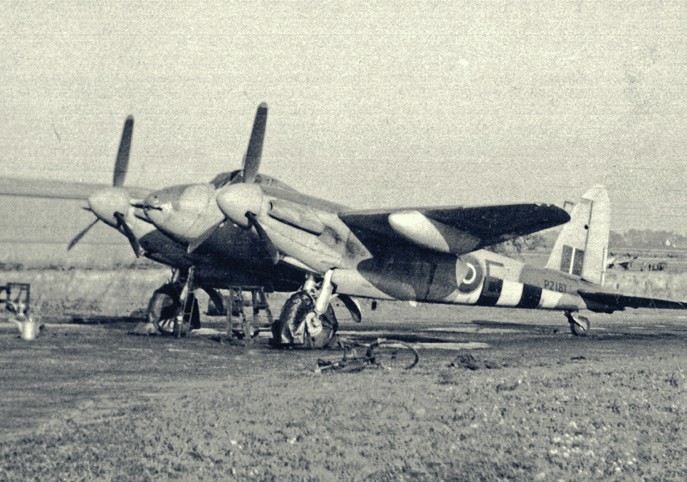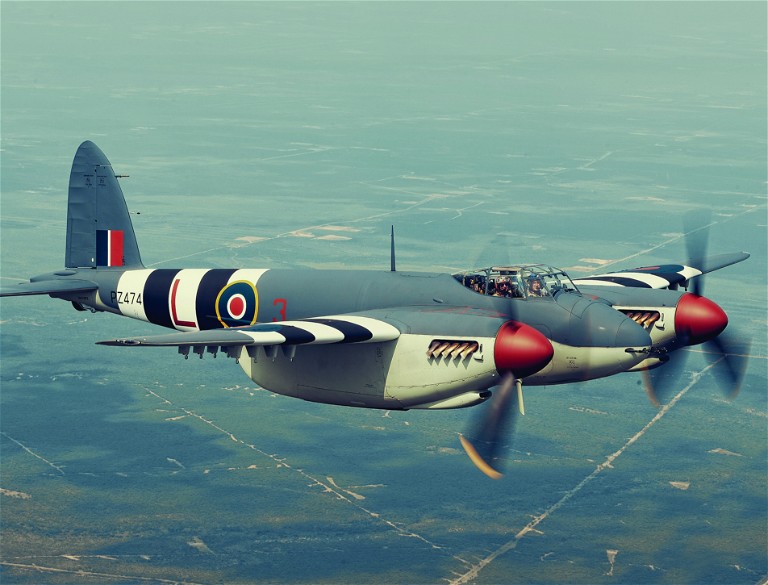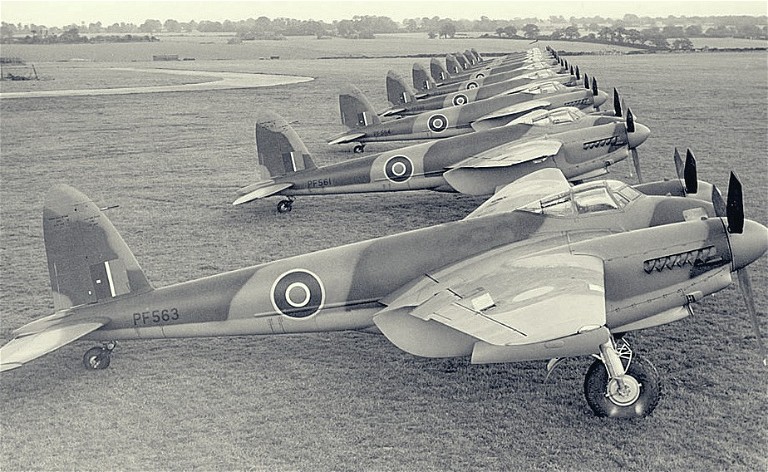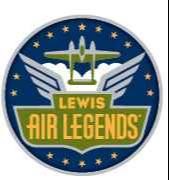22 Monday 10:00 de Havilland Mosquito FB VI Lewis Air Legends


Bradley Wentzel
Nicknamed the Timber Terror, the Loping Lumberyard, the Wooden Wonder: the de Havilland Mosquito, entered the war relatively late, a year to the day after the Battle of Britain ended, but it debuted with technology and aerodynamics far more advanced than the Spitfire’s. To preserve scarce metal reserves and for speed of production, the plane was made from pieces of wood, pressed and glued together in moulds. Exactly 7,781 were eventually built, the last one on November 15, 1950. Certainly no airplane flew as many different kinds of missions and performed them as well as the Mosquito, one of the world’s first successful multirole combat aircraft.
Mosquitos were built in 33 different variants during WWII. Seven were introduced after the war, at a time when everything else with a propeller was being shunted off to reserve and training units. Herman Goering, Germany’s wartime aviation minister, said the aircraft turned him “green and yellow with envy”.

This de Havilland Mosquito was originally constructed at Hatfield in 1945 and used for RAF training before moving on to New Zealand in 1948, where it was overhauled and delivered to 75 Squadron as NZ2384. In the early 1950s, the aircraft was acquired by new owners before being transferred to the United States. In 1970, it was abandoned and began a period of decline. It wasn’t saved until 2014, when it was acquired by Rod Lewis. Work on the airframe was completed by New Zealand-based Avspecs, Ltd, while the Rolls Royce Merlin engines were restored in America.
The project cost $10 million and took 5 years to complete. Lewis Air Legends de Havilland Mosquito PZ474, is one of only four airworthy examples of the type in the world. On January 13th, 2019, the de Havilland Mosquito made its first post-restoration flight at Ardmore Airfield in Auckland, New Zealand. Revving up its powerful Merlin engines, Steve Hinton and Warren Denholm gave everyone the moment they were waiting for as they lifted into the air. Landing about 20 minutes later, they couldn’t resist taking it up for a second spin later in the afternoon.

Rod Lewis is the son of an Air Force pilot, and was an amateur airplane mechanic long before he was an oilman. From his first plane, an old hand-cranked Aeronca Chief purchased in 1981, his collection would grow over 30 years to include 24 aircraft, most of them the classic WWII warbirds that fly as the Lewis Air Legends. He may fly a Cessna Sovereign on business trips, but the old fighters and bombers are his favorites, like Glacier Girl, a P-38 Lightning rescued after 50 years from 268 feet of Greenland ice, the only survivor of the Lost Squadron. For 100 years our brave military pilots have had a common mission... To preserve our freedom at all costs on the vast and daunting battlefield of the sky. The Lewis Air Legends mission: to preserve their memory while honoring their bravery and sacrifice. To bring the Jared Moossy thrill of their incredible flying machines – and those they fought against – to as many people as possible in a truly international display of historic airpower. Especially to young people. Our pioneer aviators and heroes inspired Rod Lewis in his boyhood passion for flight, patriotism and love of American history. So it is for future generations that Lewis Air Legends will be a living, flying tribute to those who dreamed, built, supported and flew our brilliant birds of war.
